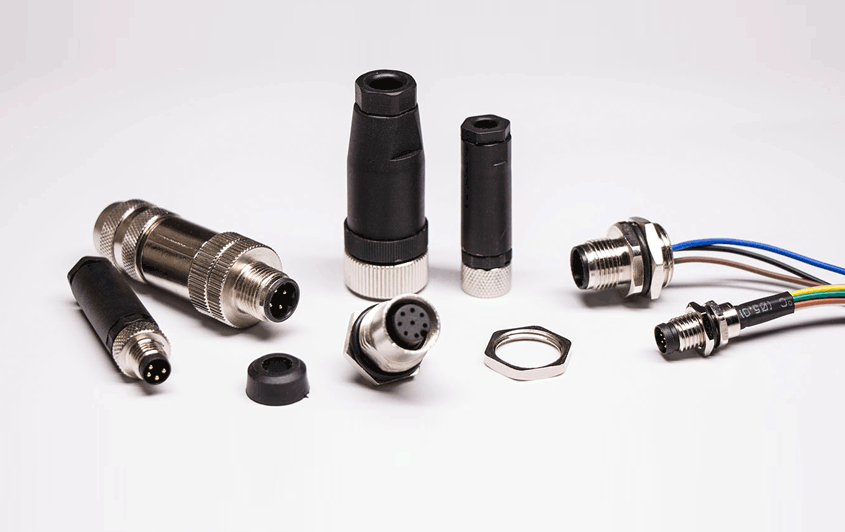M Series Connectors
Are lightweight triplestart ratchet coupling type connectors designed for avionics, aerospace, Harsh Environment Connectors, security, motorsport and heavy duty applications.
M8 connector compliant with EIA/TIA standard
According to the EIA/TIA standard, the M8 connector corresponds to the transmission technical conditions of the category 5 modular socket. The use of D-code can prevent it from erroneous connection with A-code (used for sensor and brake wiring) and B-code (used for some fieldbuses).
There was no type of M8 connector that could be used for printed circuit boards before, until the round M8 connector with surface mount termination was born. Surface mount terminations contribute to the miniaturization of field devices. The sturdy pins allow it to pass through batch packaging and the corresponding feeding process using a vibrating bowl. Another packaging method is tape and reel packaging.

The basic modular design concept creates connectors with various installation heights and different pin types. Based on the needs of users, the termination methods provided include surface mount, crimp or through-hole reflow technology, and surface mount technology is the standard. The black insulator of the connector is made of high-temperature plastic, so there is no problem in all conventional surface mount soldering procedures.
In the past, the controller in the switch cabinet used I/O cards to drive field devices; now, industrial automation tends to be a distributed system, and field brakes and sensors are often connected to a passive or fieldbus-capable I/O box. In order to provide solutions for multiple applications at the lowest cost, specific field devices require high-level modular flexible connector solutions. To this end, the various printed circuit board types of circular M8 connectors are supplemented by a cable system. Different model shapes, pin numbers, cable quality and length help to achieve cost-effective and customized automation solutions.